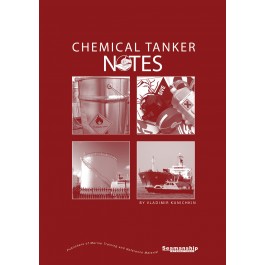ISGOTT International Safety Guide for Tankers and Terminals 6th Edition 2020
₱48,000.00
Title: ISGOTT, 6th Edition International Safety Guide for Oil Tankers and Terminals
Number of Volumes: 1
Product Code: WS1683K
Published Date: June 2020
Binding Format: Hardback
Book Height: 303 mm
Book Width: 215 mm
Book Spine: 28 mm
Weight: 2.40 kg
2 in stock
ISGOTT was first published in 1978 by combining the Tanker Safety Guide (Petroleum) published by the International Chamber of Shipping (ICS) and the International Oil Tanker and Terminal Safety Guide published on behalf of the Oil Companies International Marine Forum (OCIMF). This Sixth Edition updates and replaces the 2006 Fifth Edition and has been reviewed by OCIMF and ICS together with the International Association of Ports and Harbors (IAPH). Support has also been provided by other industry associations, including INTERTANKO, the Society of International Gas Tanker and Terminal Operators (SIGTTO) and the Society for Gas as a Marine Fuel (SGMF), as well as specialists in topics such as human factors.
The authors believe that ISGOTT continues to provide the best technical guidance on oil tanker and terminal operations. All operators are urged to ensure that the recommendations in this Sixth Edition are fully understood and are incorporated in safety management systems and procedures.
This new edition covers a range of topical issues including gas detection, the toxicity and the toxic effects of petroleum products (including benzene and hydrogen sulphide), the generation of static electricity and stray currents, fire protection and the growing use of mobile electronic technology.
In addition, the opportunity was taken to include new topics or to significantly reappraise topics previously covered that have undergone a shift in emphasis since the Fifth Edition. These include:
•Enclosed space entry
•Human factors
•Safety Management Systems (SMSs), including complementary tools and processes such as permits to work, risk assessment, Lock-out/Tag-out (LO/TO), Stop Work Authority (SWA) and their linkage to the underlying principles of the International Safety Management (ISM) Code
•Marine terminal administration and the critical importance of the tanker/terminal interface
•Alternative and emerging technologies
•Bunkering operations, including the use of alternative fuels such as Liquefied Natural Gas (LNG)
•Cargo inspections
•Alignment with OCIMF’s recently revised Mooring Equipment Guidelines
•Maritime security and linkage to both the International Ship and Port Facility Security (ISPS) Code and industry’s maritime security Best Management Practices (BMP).
The Ship/Shore Safety and Bunkering Operations Checklists have also been completely revised to reflect changes in the understanding of the impact of human factors in their effective use.
The Sixth Edition retains the four-section format of:
•General Information
•Tanker Information
•Terminal Information
•Ship/Shore (Tanker/Terminal) Interface.
However, the layout has been significantly improved to make the book easier to navigate, with the addition of coloured sections and tabs. The text is supported throughout with new and updated illustrations.
Be the first to review “ISGOTT International Safety Guide for Tankers and Terminals 6th Edition 2020” Cancel reply
Related products
Witherby Seamanship
ECDIS Procedures Guide Volume 1 and 2 Type Specific Information Volume 2 (2021-2022)
Witherby Seamanship
Economics of Maritime Transport: Theory and Practice Paperback – March, 1999












Reviews
There are no reviews yet.